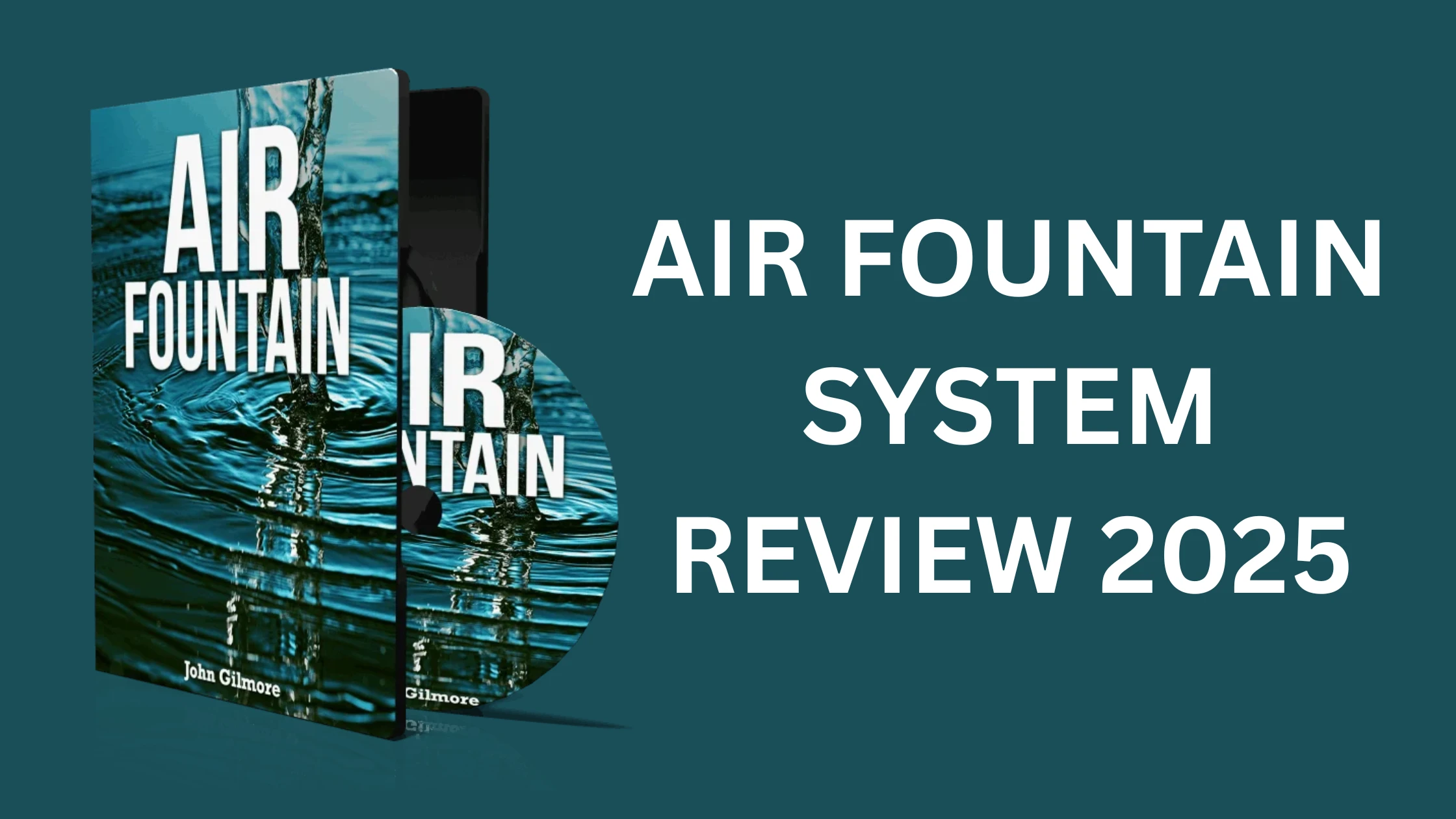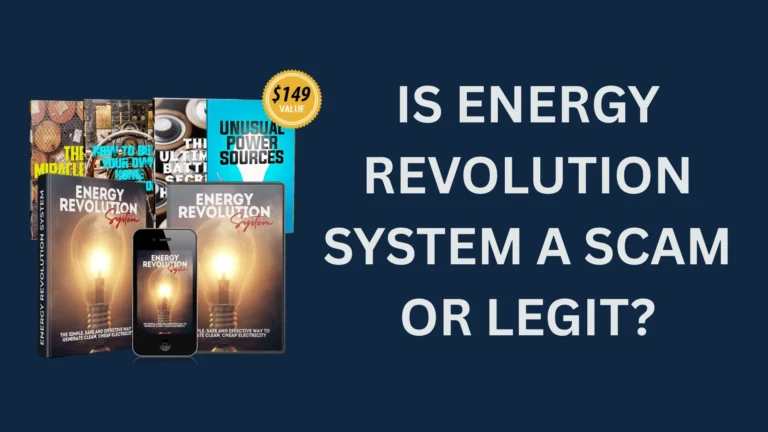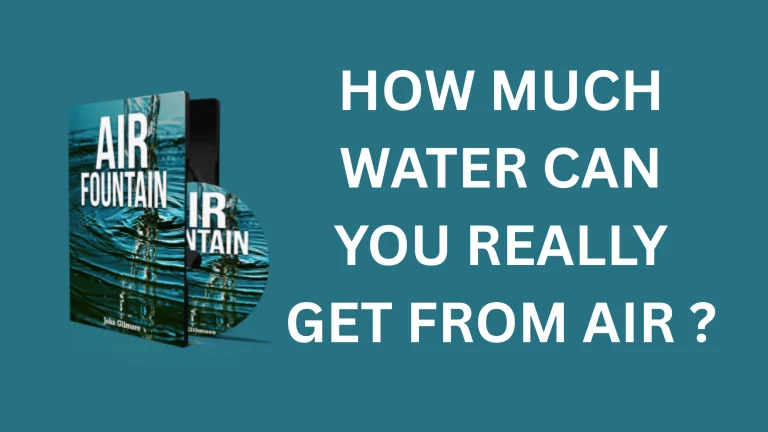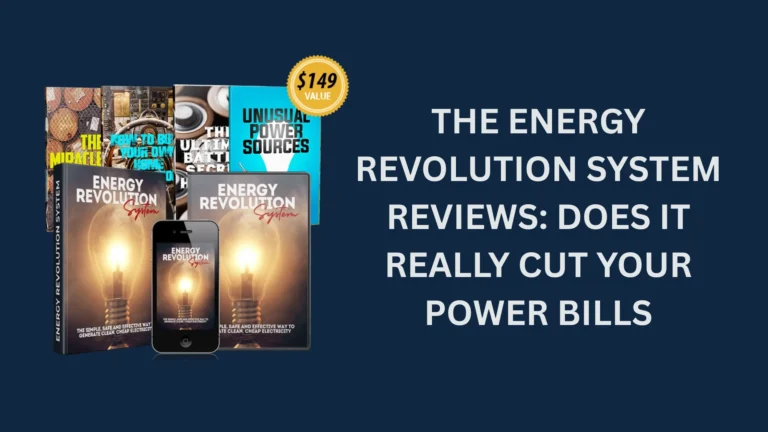Air Fountain System Review 2025 : Can You Really Make Water from Air?
| Feature | Description |
|---|---|
| Product Type | DIY Digital Guide for Building a Water Generator |
| Creator | John Gilmore |
| Main Principle | Condensation (Atmospheric Water Generation) |
| Cost of Guide | $39 |
| Estimated Build Cost | ~$280–$430 (Depending on parts) |
| Daily Water Output | ~0.5 to 10 gallons/day (climate dependent) |
| Ideal For | Humid regions, off-grid users, DIY enthusiasts |
| Key Components | Dehumidifier, Water Filter System, Tubing, Regulator |
| Off-grid Friendly | Yes (Solar/Car battery compatible) |
| Maintenance | Required (Filters, cleaning, disinfection) |
💡 The Real Story That Started It All
I remember it clearly—the day my water bill nearly made me drop my coffee. I stared at it in disbelief. Had someone installed a water slide in my backyard without telling me? That moment sent me down a rabbit hole looking for solutions, and that’s how I found the Air Fountain System.
This is not some high-tech, out-of-reach machine. It’s a budget-friendly, realistic alternative for people who want more control over their water supply—especially in emergencies or off-grid living. Let’s take a deeper look in this Air Fountain System review.
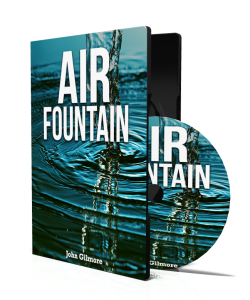
🧾 Honest Review: My Thoughts After Trying the System
When I first downloaded the guide, I wasn’t sure what to expect. But I was pleasantly surprised. The instructions are clear and beginner-friendly, especially the video walkthroughs. You don’t need to be a tech genius—just someone with a bit of curiosity and willingness to follow steps.
What I liked:
- The guide is thorough. It breaks down every part you’ll need.
- It includes real diagrams and easy-to-follow videos.
- The parts list actually matched what I found at my local store.
- It didn’t take long to assemble once everything arrived—around 3 hours over two days.
What could be better:
- You definitely need some patience. The setup isn’t plug-and-play.
- Water output is slow at first. It picks up, but don’t expect instant gallons.
- You need to stay on top of filter changes. I let mine go too long and had to flush the system.
After a few weeks of use, I was consistently getting between 2–4 gallons per day, which is solid for drinking, cooking, and emergencies. For me, the Air Fountain System review comes down to this: if you follow the guide, live in a humid area, and want water independence, it truly delivers. Not perfectly—but practically.
👉 Want to take control of your water supply? Start building your own Air Fountain System today—grab the official guide here.
🧰 What Exactly Is the Air Fountain System?
Developed by survival expert John Gilmore, the Air Fountain System is not a physical device. Instead, it’s a digital DIY guide that teaches you how to build your own atmospheric water generator (AWG). You’re not buying a machine—you’re buying the instructions to make one.
The $39 guide includes:
- Step-by-step video tutorials
- Printable blueprints
- Full list of required materials
You source the parts yourself—most of them are affordable and available online or at your local hardware store. If you’re handy or even just curious, this system promises to help you build a fully functional water generator for under $300.
This is important: the guide doesn’t claim to solve world water problems overnight. It’s designed to help individuals or small households build a device that makes clean drinking water, especially in places with moderate to high humidity.
🔬 How Does the Air Fountain System Actually Work?
The science is simple but powerful: condensation. The same process that fogs up your bathroom mirror or forms dew on your car windshield can be harnessed to create clean water.Here’s the basic flow of how it works:
- Air is pulled into the system from the environment.
- The air is cooled until water vapor condenses into liquid droplets.
- The condensed water is collected into a storage tank.
- The water is then filtered and disinfected, making it safe for drinking.
This mimics how commercial atmospheric water generators work—but at a fraction of the cost. The Air Fountain System guide even shows how to power your build using solar energy or car batteries, making it ideal for off-grid living. The output will vary based on climate. Humid regions yield more water. If you live in an arid desert? Don’t expect miracles. But for temperate or tropical areas, the results can be impressive—up to 10 gallons per day in ideal conditions.
💸 Cost Breakdown: What You’ll Actually Spend
Building the Air Fountain System isn’t free, but it’s budget-friendly compared to other water solutions.
Estimated parts cost:
- Dehumidifier – $175–$225
- Multi-stage water filtration system – $25–$125
- Clear vinyl tubing – $3
- Servo voltage regulator – $75
- Scrubber pads & zip ties – ~$2
So depending on what you pick, your build may fall between $280 and $430, plus the $39 guide.
👉 Tired of overpriced bottled water? Create clean, drinkable water at home with this smart DIY system. Learn more now.
♻️ Is It Really Eco-Friendly?
Yes—if you power it the right way.
Using solar panels or off-grid batteries can make your water generation setup nearly carbon-neutral. It helps reduce plastic waste, too, by lowering your dependence on bottled water.
But if you’re using regular grid power (especially from fossil fuels), the carbon impact rises. Like any device that condenses water, it uses energy—but you can make it sustainable with smart choices.
✅ Key Benefits of the Air Fountain System
The Air Fountain System isn’t just a clever DIY project—it’s packed with practical advantages for anyone seeking greater control over their water needs. Here are some of the biggest benefits of building and using this system:
1. Water Independence (Even Off-Grid)
No more relying solely on municipal water or bottled sources. Whether you live in a remote cabin or want a backup supply for emergencies, the Air Fountain System gives you the ability to generate your own water from air. Pair it with solar power or a car battery, and you’re ready to go completely off-grid.
2. Cost-Effective Solution
Commercial atmospheric water generators (AWGs) can cost thousands. This guide and its parts cost under $500 total. Over time, the system can help reduce or eliminate bottled water costs, making it a smart investment for households trying to cut expenses.
3. Environmentally Friendly
The Air Fountain System helps reduce plastic bottle waste and can be powered by renewable energy sources like solar panels. For eco-conscious users, this means a lower carbon footprint and less environmental harm, especially when compared to factory-produced water solutions.
4. Emergency Preparedness
During natural disasters or infrastructure failures, clean water becomes one of the first essentials in short supply. This system ensures you have a reliable backup source to cover basic hydration and hygiene needs.
5. Easy Maintenance and Operation
Once built, the Air Fountain System is easy to operate and maintain. It only requires occasional filter changes and basic cleaning. There’s no need for technical knowledge, making it perfect for beginners and DIY newcomers.
6. Portable and Adaptable
Thanks to its simple design, the system is relatively compact and portable. Whether you’re living off-grid, camping, or staying in a mobile home, you can bring your water source with you.
📌 Who Is It For?
The Air Fountain System is ideal for:
- People in humid climates
- Preppers and survivalists
- Off-grid homeowners
- Those tired of high water bills
- Anyone who enjoys DIY projects with real-life impact
If you’re in a dry, desert climate or need 50+ gallons of water per day, this probably isn’t your golden ticket. But for supplemental, safe water that you control? It’s a smart investment.
⚠️ Limitations You Should Know
Let’s be clear—it’s not a magic faucet.
- Humidity matters: Low humidity = low water yield.
- Not for whole-house needs: Best for drinking, cooking, and emergencies.
- Ongoing care: Filter replacements and UV checks are necessary.
- DIY isn’t optional: You’ll need to build it yourself, but the guide helps a lot.
❓ Frequently Asked Questions (FAQ)
Q: What is the Air Fountain System?
A: It’s a DIY digital guide created by survival expert John Gilmore. It teaches you how to build a device that captures moisture from the air and turns it into clean drinking water using the principle of condensation.
Q: Does it really work?
A: Yes, the underlying technology is scientifically sound. As long as you follow the guide and live in a climate with decent humidity, it works well.
Q: How much water does it make per day?
A: Output depends on local humidity and temperature. In ideal conditions, you can get up to 10 gallons/day, but realistically expect 2–4 gallons/day in most humid areas.
Q: Is it difficult to build?
A: Not really. If you’re comfortable with basic tools and instructions, you’ll be fine. The guide includes step-by-step videos and blueprints.
Q: Is the water safe to drink?
A: Yes, as long as you use proper filters and UV sterilization as recommended. Regular maintenance is important to ensure safety.
Q: Can I run it without grid electricity?
A: Definitely. The system is off-grid capable and can be powered using solar panels or even a car battery.
Q: Is this better than buying a commercial AWG machine?
A: Commercial units cost thousands. This DIY solution costs less than $500 total, so it’s a more budget-friendly option for individuals or small households.
Q: Can I use it for an entire family?
A: It depends on your water usage. For basic drinking and cooking needs, yes. For full-household supply including showers and laundry, it may not be enough.
👉 Be ready for anything. Whether you’re prepping for a storm or living off-grid, this guide helps you stay self-sufficient. Get instant access here.
🧠 Final Thoughts: Is It Worth It?
In my opinion—absolutely, if you fit the profile.
The Air Fountain System is one of the few products that offers real-world benefits with minimal ongoing costs. It’s not instant or flashy, but it works. You just need patience, basic tools, and a willingness to follow instructions.
If you’re someone who likes to be prepared, wants clean water independence, or enjoys sustainable DIY, this guide can change the way you think about water.
💧 Looking for another off-grid water solution? Check out our Joseph Well System review to see how it compares for long-term water independence.
